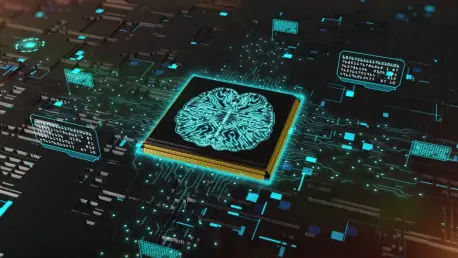Recent advances in Artificial Intelligence (AI) have dramatically transformed how US intelligence agencies operate, stimulating extensive discussions within the national security sector. This evolution is highlighted by AI’s effective role in speeding up the declassification process of important historical documents, such as those connected to the JFK assassination. AI has been pivotal in releasing tens of thousands of previously classified papers, confirming accounts like the lone involvement of Lee Harvey Oswald and uncovering complex details of CIA operations during the 1960s. Furthermore, the integration of AI tools has broadened the scope of intelligence activities, enhancing operations through secure, “top-secret clouds” provided by leading cloud service firms. The adoption of these technologies underscores a broader willingness to engage with private-sector innovations, enabling a fast and collaborative effort to strengthen national security. The implementation of AI emphasizes an ongoing commitment to integrating modern technology to optimize efficiency and accuracy within intelligence operations.
AI in Declassification Efforts
Accelerating Access to Historical Records
AI technology has transformed document management processes, particularly regarding the declassification of sensitive historical records. Tools powered by AI have enabled the US intelligence community to tackle the arduous task of reviewing and releasing classified documents with remarkable efficiency. This technological aid played a crucial role in the release of documents pertaining to historical events like the JFK assassination—a matter that had been marred by speculation and conspiracy theories over the decades. AI algorithms were utilized to quickly determine the relevance and sensitivity of information contained within these files, substantially reducing the time traditionally required for such processes. The result is an expedited clarification of historical narratives, allowing the public access to vital information while preserving national security interests. These advancements reflect a pivotal moment in how intelligence agencies approach the management and disclosure of archival records, demonstrating the powerful roles AI can play in modernizing national security infrastructure.
Impacts on Intelligence Operations
Beyond facilitating access to historical records, AI has influenced various operational aspects within intelligence agencies, enhancing their analytical capabilities and improving decision-making processes. The deployment of AI-driven tools across several agencies has created avenues for automating complex analyses and predictions. AI systems analyze vast data sets at unprecedented speeds, extracting actionable intelligence that would otherwise require extensive human effort and time. This evolution transforms how intelligence operations are conducted, enabling smart insights and proactive measures to be taken in response to emerging threats. Additionally, AI assists in the detection and monitoring of risks across diverse domains, from cybersecurity to geopolitical developments. By driving efficiency and precision, these technological advances provide the intelligence community with robust resources to navigate the dynamic global landscape. As AI technology continues to evolve, it promises even greater enhancements in predictive modeling and strategic planning, defining new horizons for intelligence methodologies and capabilities.
Cloud Integration in Intelligence
Secure Environments for Sensitive Data
The development of cloud infrastructure tailored for intelligence agencies marks a significant progression toward managing sensitive data more efficiently in highly secure environments. Leading public cloud providers like AWS, Microsoft Azure, and Google Cloud have crafted solutions that adhere to stringent security standards, facilitating operations within “top-secret clouds”. These secure regions cater to workloads classified up to the Secret level, allowing for the processing of intelligence data with enhanced safety and privacy measures. This industry-led innovation aligns with government objectives to streamline and secure intelligence operations, providing a scalable platform for analyzing and storing sensitive data. The partnership between tech firms and governmental entities signifies an inclination toward leveraging private-sector expertise to optimize national security frameworks. Cloud integration has emerged as a vital component in modern intelligence setups, ensuring continuous protection of critical infrastructure and data against increasing cyber threats and breaches.
Outsourcing Technological Solutions
Embracing collaborative partnerships between intelligence agencies and private tech firms represents a strategic shift toward outsourcing technological solutions for operational betterment. This approach emphasizes the reliance on external firms that are at the forefront of technological advancements and innovation, allowing intelligence agencies to refocus on core competencies without direct involvement in tech development. Industry leaders offer specialized cloud solutions and AI tools streamlined for intelligence use, aligning with national security goals and ensuring seamless integration into existing frameworks. Intelligence operations benefit from cutting-edge technology and ongoing enhancements without incurring high development costs and delays. This strategy facilitates agility, adaptability, and sustained excellence in intelligence activities, reflecting a broader consensus within the community favoring diverse collaborations. As the landscape of threats and challenges continues to evolve, these partnerships are anticipated to play increasingly central roles in safeguarding national interests, prompting further exploration and refinement of collaborative models.
The Future of AI in Intelligence
Evolving Applications and Partnerships
The impact of AI technology on intelligence operations prompts ongoing exploration of new applications and partnerships that enhance national security measures. As AI algorithms continue to advance, their potential to revolutionize intelligence tactics and strategies grows correspondingly. Emerging tools boast capabilities beyond traditional analytics, offering intelligence agencies novel avenues for assessing threats and opportunities. AI’s ability to predict, analyze, and synthesize large amounts of data supports the proactive identification of risks, reshaping policy frameworks and operational directives. Consequently, long-term partnerships with tech innovators are crucial, fostering environments conducive to growth and innovation. These collaborations are set to generate sophisticated intelligence solutions, thereby establishing benchmarks for future developments in national security. Anticipating further integration of AI across diverse operational spheres demands thoughtful planning and execution, aiming to refine methodologies and optimize outcomes. Intelligent systems are poised to redefine intelligence norms, heralding a new era of security and efficacy.
Anticipating Challenges and Opportunities
Recent developments in Artificial Intelligence (AI) have dramatically transformed how US intelligence agencies operate, stimulating extensive discussions in the national security sector. This change is illustrated by AI’s effective role in speeding up the declassification process of important historical documents, such as those connected to the JFK assassination. AI has been pivotal in releasing tens of thousands of previously classified papers, confirming accounts like the lone involvement of Lee Harvey Oswald and uncovering complex details of CIA operations during the 1960s. Furthermore, AI tools have broadened the scope of intelligence activities, enhancing operations through secure “top-secret clouds” provided by leading cloud service firms. This adoption of AI reflects a larger trend toward embracing private-sector innovations, enabling a fast and collaborative effort to strengthen national security. The use of AI indicates an ongoing commitment to integrating modern technology in order to optimize efficiency and accuracy within intelligence operations.









